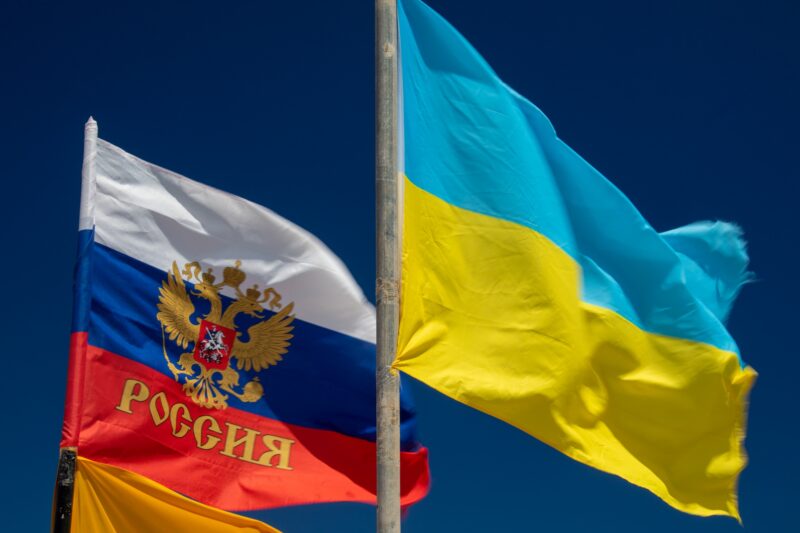Ukrainian forces have recaptured seven villages from Russian control in the past week, according to a statement made on Monday by Deputy Defense Minister Hanna Maliar. The recaptured territory includes the villages of Blahodatne, Makarivka, Neskuchne, Lobkove, Levadne, and Novodrivka, and spans 90 square kilometers. These small successes could easily be reversed in the course of war, but President Volodymyr Zelenskyy maintains that spirits remain high—“our moment is there, and that is very important.”
The Russian campaign to “liberate” an industrial region known as Donbas had gone awry, as resistance from Ukrainian troops was stronger than expected. Forced to retreat, Russian forces annexed four other provinces, though they didn’t achieve full control over the territory. Since then, each side has been locked in a near-stalemate. While small in size, Ukraine’s recapture of the villages could provide and opportunity to penetrate Russian defenses and acquire greater gains.
In 2014, Russia annexed Crimea and sparked a wave of pro-Russia sentiment in Ukraine. Separatists were supported by weapons and troops along the Ukrainian border, while NATO deployed battalions into other Eastern European countries to deter further Russian expansion. Conflict has continued to plague Ukraine since. Late 2021, Russian officials called on NATO to cease military activity in Eastern Europe and block Ukraine from joining the organization—these demands were rejected. On February 24, 2022, Russian President Vladimir Putin announced a military operation, citing a need to “demilitarize” and protect Russians living in Ukraine.
Ukraine and its allies have attempted three main strategies to prevent conflict from worsening—military deployment, economic sanctions, and diplomacy.
NATO and the U.S. have both deployed battalions and tanks to the countries surrounding Russia and Ukraine. Instead of discouraging Russian movement, this action was seen as a threat, and allowed President Putin to claim Russian militarization as a justified response. Instead of acting as a deterrent, additional troops and weapons only escalate the situation.
The U.S. has imposed multiple levels of sanctions on Russia, but none have had the intended effect. Instead of punishing Russia through economic avenues, the sanctions have isolated Russia’s industries and destabilized global markets. Additionally, Russia now has room to explore and strengthen relationships with non-Western economic partners—furthering the divide between Eastern and Western nations.
In 2014, France, Germany, Russia, and Ukraine drafted the Minsk Protocol, which advocated for an immediate ceasefire, withdrawal of heavy weaponry, and Ukrainian control over disputed territories. The attempt was unsuccessful, so Minsk II was drafted. This new agreement granted some regions in Donbas self-government, while the rest was returned to Ukrainian control. The Minsk II was signed in 2015; while fighting did subside, the agreement was never fully implemented. Prior to the 2022 invasion, President Putin declared that the Minsk agreement “no longer existed” due to Ukrainian actions.
Throughout the conflict, militarization and economic sanctions have been wholly unsuccessful. Plans to put pressure on Russia have backfired and led to conflict escalation. The likelihood that Russia will take a loss is very low; the stakes are extremely high for President Putin. Already disconcerted by his military’s weak performance, he cannot afford to back down from the battle he started. To maintain his political standing, President Putin will not allow the conflict with Ukraine to end without feeling like Russia has succeeded in some way. The Minsk II agreement was partially successful because it played upon that interest by making concessions in the Donbas region. While the loss of territory is not ideal, leaders need to first prioritize lessening the human cost.
The need for a solution is dire; according to NPR analysts in February, about 200,000 Russian troops and 100,000 Ukrainian troops have been killed or wounded in action, along with 30,000 civilian deaths.
In order to create a functioning solution to the Russia-Ukraine war, it is imperative to investigate the reasons it began. Was NATO’s expansion into Eastern Europe the cause of the war? President Putin has used it as a justification, but a deeper look unveils the weakness of the idea. Ukrainian leaders do have an interest in NATO membership but require support from all members to join—which is highly unlikely. President Putin understands that most nations in NATO are unwilling to go to war on behalf of Ukraine, stating “there is nothing to worry us in terms of Swedish and Finnish membership of NATO” months before the invasion. If NATO actions were not the reason for the start of the war, then rescinding those actions would lead nowhere.
Instead, we look to President Putin’s interests as a fundamental factor in the conflict. Zbigniew Brzezinski wrote, “without Ukraine, Russia ceases to be a Eurasian empire”, an idea that President Putin mirrors. He has repeated the sentiment in the past and is now backing it up with action for his own political gains. As of now, Putin can benefit only from a resounding victory. As such, he is unlikely to allow Russian troops to retreat and cede territory back to Ukraine, regardless of the heavy human and equipment cost. In light of this, any diplomacy efforts must allow for compromise in order to be successful.
A drawn-out war will only worsen the plight of the Ukrainian people. To negotiate an immediate ceasefire, concessions must be made, just as they were in the Minsk agreements. President Putin has no incentive to stop the conflict unless Russia has gained enough that he will not pay the political cost. Ukraine and its allies must be willing to compromise and create an agreement that can satisfy all parties—for the sake of human lives.
- Russia Attacks Ukrainian Ports, Destroying Grain Stores - October 11, 2023
- Afghanistan: Taliban Bar Women From Taking Key University Exams - September 27, 2023
- Mass Expulsions And Xenophobia In Tunisia After Migrants Implicated In Man’s Death - September 10, 2023


